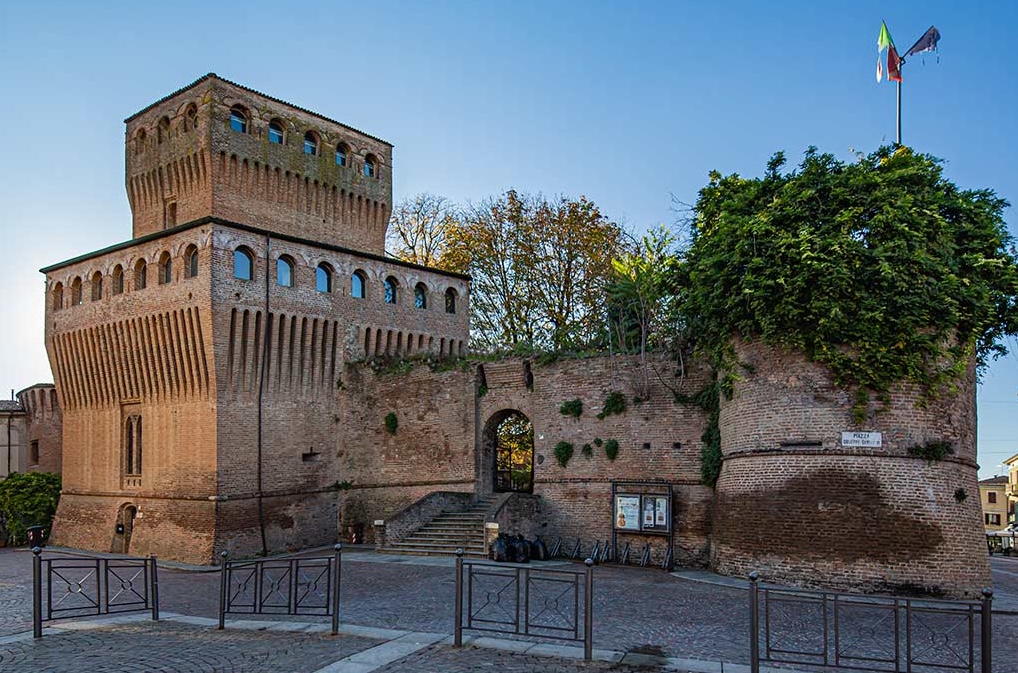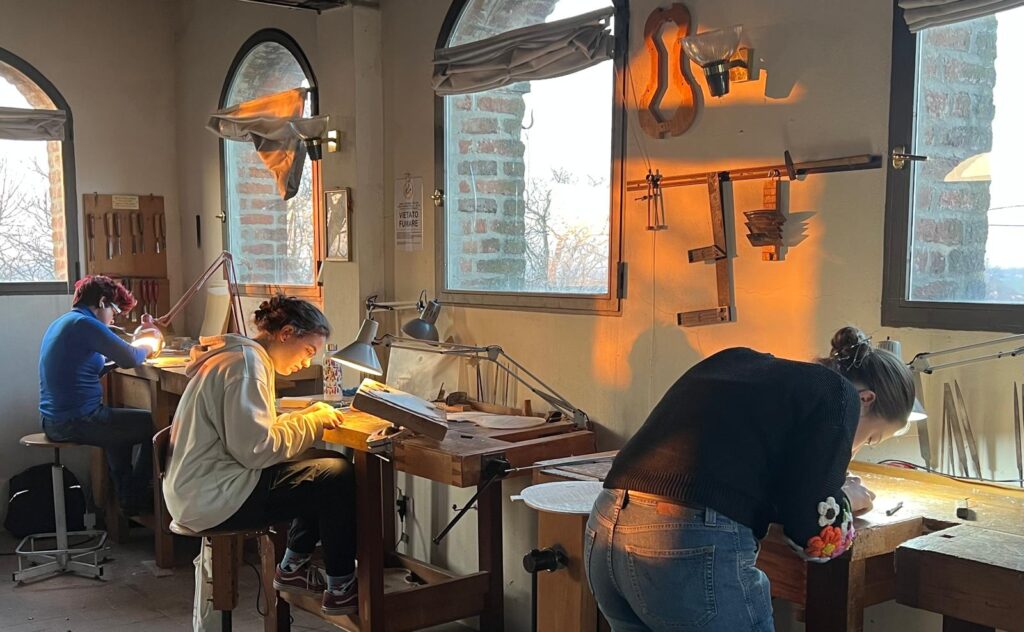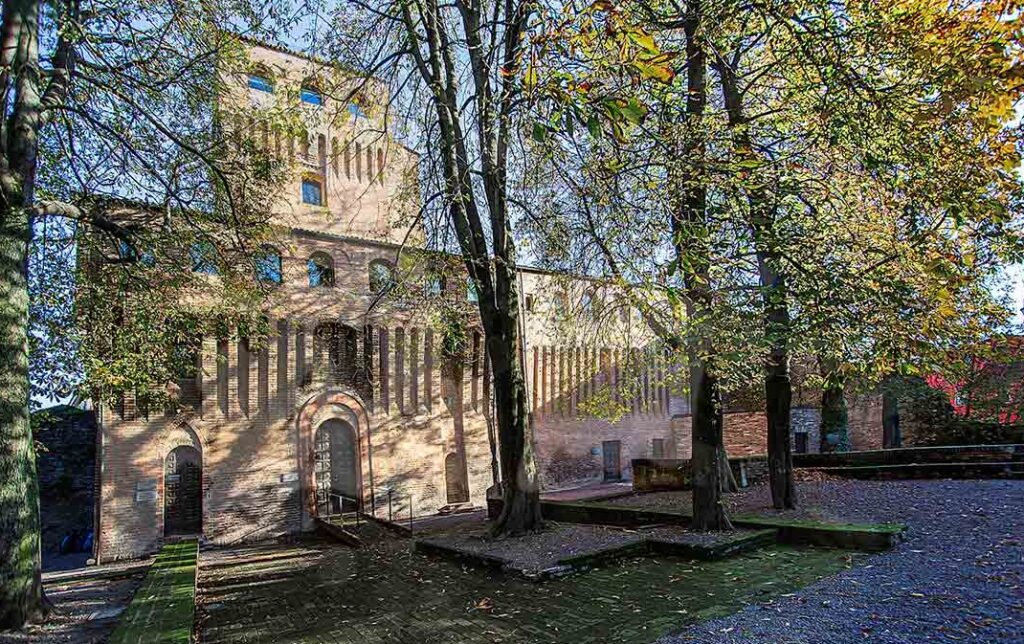THE HEADQUARTER.
The International School of Violin Making in Parma Accademia Scrollavezza, founded in 1975 within the Arrigo Boito Conservatory, has always been a point of reference in Europe for violin making training. Under the guidance of Maestro Renato Scrollavezza, who has directed its activities since its beginnings, it has trained generations of violin makers, today esteemed professionals all over the world. The school is distinguished by its selectivity, its approach focused on workshop practice and the personalized attention devoted to each student, values that have consolidated its prestige on the international scene.
The school has been based since 2006 in Piazza Garibaldi, 1 in Noceto (PR), in the prestigious “Castle of Music” and is managed by the Associazione Liuteria Parmense.
Class schedule: Wednesday and Thursday 9 a.m.-1 p.m./14 p.m.-6 p.m.
THE MUSEUM
The Scrollavezza Collection at the Castle of Music
From his self-taught beginnings to his consecration as one of the leading violin makers of the second half of the twentieth century, the rooms of the Castle take us through Scrollavezza’s long career, which lasted almost seventy years, and also introduce us to the history of stringed instruments as they developed within the Po Valley, where the violin was born in the first half of the sixteenth century.
Scrollavezza’s indefatigable creativity, which drove him to try his hand at building almost every kind of stringed instrument, brings the visitor closer to a world of shapes and sounds whose variety equals, as Renato stated, the world of nature.
After his encounter with wandering musicians, around 1944 Scrollavezza decided to try his hand, at about age 17, at the construction of the instrument whose sound so deeply affected him: the violin.
Self-taught and without any guidance, the young man, after work or on holidays, began to confront the many challenges that the lack of the necessary tools and ignorance of the techniques used posed for him. Almost seventy years later, in 2013, Renato recalls this period in an interview made for the documentary “Violin Makers,” where he speaks with three other protagonists of Italian violin making in the second half of the twentieth century: the Cremonese Gio Batta Morassi and Francesco Bissolotti, and the Modenese Gian Carlo Guicciardi.
The continuation of Scrollavezza’s career is traced here in part through his own account, which, however, does not linger on the early affirmations that the young man began to garner beginning with the important Purchase Prize he achieved, while still a student in 1954, in the competition of the Accademia Nazionale di Santa Cecilia, the venue at which the cello awarded on that occasion is still on display today.
From his own words, one of the first and most significant obstacles he encountered stems from his not knowing that, in order to build a violin, a “form,” or a template around which to bend the bands that would later be used to define the contour of the harmonic planes, is necessary. The first instruments made by the future master, such as the 1948 violin exhibited here and deprived by Scrollavezza himself of the internal scroll, may therefore have been built without this aid, or with the rudimentary stratagem of nails fixed on a board.
From this time and over the course of fifteen years, Scrollavezza established himself as one of the leading Italian violin makers of the second half of the twentieth century, but his personality and life story imprinted his later choices with a peculiar direction.
The initial lack of secure guidance in the profession, which on the one hand made his beginnings more painful, on the other hand did not stifle within the confines of pre-established canons the luthier’s creativity, which continued to express itself freely in many of the instruments on display here: lutes, vihuele, guitars, viole da gamba and viole d’amore, pochettes, and decorated instruments.
Since 1980 Scrollavezza then decided to stop selling, except very occasionally, his instruments to devote himself to teaching and to a creative impulse that culminated in the construction of his Chamber Orchestra (1983-85) inaugurated precisely in Noceto by Pina Carmirelli’s “I Musici” ensemble.
Opening time:
April 1 to October 31
Thursday from 10 a.m. to 1 p.m. and 3 p.m. to 7 p.m.
Friday from 10 a.m. to 1 p.m. and 3 p.m. to 7 p.m.
Saturday from 10 a.m. to 1 p.m. and 3 p.m. to 7 p.m.
Sunday from 10 a.m. to 1 p.m. and 3 p.m. to 7 p.m.
Novembre 1 to March 31
Thursday from 10 a.m. to 1 p.m. and 2 p.m. to 6 p.m.
Friday from 10 a.m. to 1 p.m. and 2 p.m. to 6 p.m.
Saturday from 10 a.m. to 1 p.m. and 2 p.m. to 6 p.m.
Sunday from 10 a.m. to 1 p.m. and 2 p.m. to 6 p.m.









